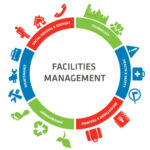Australia presents a mosaic of educational journeys, ranging from early childhood to tertiary education and reflecting people’s diversity and unique learning styles and goals. The Australian education system with its structure, supports students at every step bringing about a comprehensive approach that values not simply academic achievement but also personal development. Few countries in the world possess an education system as impressive as Australia’s, which is recognised for its high standards and a wide range of options available to students. Emphasis on accessibility, innovation and quality across primary, secondary and tertiary sectors with such a complex structure it is one of the renowned educational systems.
The importance of International education to Australia’s economy
International education makes a substantial economic contribution to Australia. Australia’s third-largest export, valued at $19.9 billion, is foreign education, according to the most recent data from the Australian Bureau of Statistics (ABS). Furthermore, 130,000 of the foreign students enrolled in Australia in 2014–15 are predicted to graduate and contribute as skilled immigrants to the country’s employment, increasing the percentage of the country’s workforce with a tertiary degree by 3%. The education business in Australia is a booming and growing service sector. In 2016, Australia ranked as the third-largest provider of education to international students, after the US and the UK.
Structure of the Australian Education System
All children in Australia between the ages of five and fifteen are required to attend school. All of Australia’s states provide comparable schooling; however, certain jurisdictions may have somewhat different age ranges.
Post-secondary education is referred to as tertiary education. Tertiary education encompasses both higher education and vocational education and training (VET).
The Australian Qualifications Framework (AQF) classifies higher education into university and non-university institutions, with degrees ranging from level 5 to 10.
The three primary university degrees that lead to master’s, doctoral, and bachelor’s degrees. Undergraduate and postgraduate credentials have sub-degrees available. The general organization of the Australian educational system is as follows:
Pre-School Education: At the age of 5 years by enrolling in the preparatory or kindergarten.
Primary Education: Between the ages of 6 and 12 years.
Secondary Education: Between the ages of 13 and 18 years.
A nationwide framework for post-compulsory education qualifications is the Australian Qualifications Framework (AQF). Under a single, national framework, its 10 levels allow for smooth transfers between academic institutions and between school, vocational, and further education degrees.
Key Features of the Australian Education System
Assignment Help Australia easily conforms to the main components of the Australian educational system, greatly enhancing its efficacy and success. The Key Features of the Australian Education system are as follows:
Diversity in Classrooms
“Everyone you meet has a lesson to teach, a story to tell, and a dream to share,” as stated Robin Sharma. Students are exposed to a variety of perspectives as a consequence, which fosters their overall growth.
Student Centric
Education is more than just memorization of information; it is a way to transform and rebuild your perspectives and help you become a better version of yourself. Australian education places a strong importance on skill-based grading, flexible teaching strategies, and constructive feedback. Consequently, children study in an environment that promotes everyday development.
Active Learning
Australian courses are designed to employ a problem-based learning method, bolstered by real-world case studies, to provide students practical understanding. Furthermore, educators create their lesson plans with the participation of students in mind. It is noteworthy because assignments are assessed based on individualistic statements, which motivates students to express their views and offer reasons in favour of and against them. As a result, teachers and students develop a friendly relationship that encourages experiential learning.
Advanced resources
Significant improvements in education have been brought about by the digitization of Australia’s educational system. With the help of tools like interactive online textbooks, efficient learning management systems, and dashboards for tracking grades and submitting assignments, education is becoming more efficient and easily accessible. In addition, students receive helpful examples, timely feedback, and question-answering sessions. Because of this, studying is now as easy as clicking on your laptop, which serves as your constant companion in learning.
How is the Australian education system better than other countries?
Australia’s finest universities are renowned for their excellent academic programs, real-world curricula, and student-centered teaching styles. Let’s examine some of the factors that make Australia one of the most prestigious studies abroad locations:
Australian scholarships
The Australian Government, educational institutions, and other private and public organizations are the main sponsors of Australia’s significant scholarships, grants, and bursaries.
Various educational paths
Australian universities have a wide range of courses to choose from, allowing students to personalize their studies to suit their needs.
Jobs available in Australia
In Australia, universities let students to work from the start of the degree, providing them with plenty of opportunity to experience the working world.Students can work as much as 48 hours per fortnight when enrolled in school, and they can work as much as they like during vacations.
Opportunities for research
Australia has long been at the forefront of cutting-edge science, having played a key role in the study of penicillin and IVF as well as the invention of WiFi. Students have access to countless research opportunities around the nation.
Conclusion
The Australian education system shines brightly as the source of academic excellence among nations, wherein quality and diversity have wedded themselves with innovation. Its multi-round approach does not only educate but also installs the necessary skills equipping students to adapt and strive in a fast-changing world. As part of the journey to education, Do My Assignment services are important helpers that assist students in their studies. They provide advice, materials and professional help; they assist in making a more profound acquaintance with subjects and contribute to academic success.
Furthermore, the Australian education system is a journey that changes people, encourages critical thinking, and equips them to face problems in the real world. It is not only about imparting knowledge.



